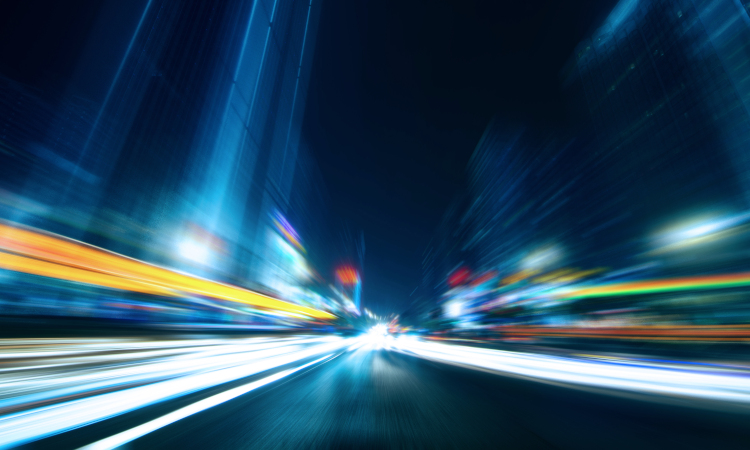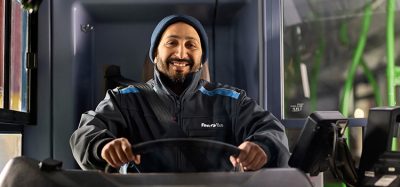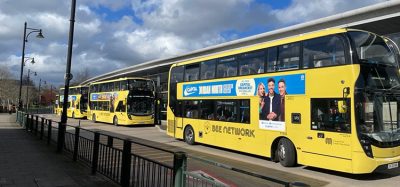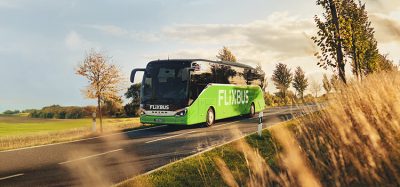New technologies and their impact on the transport workforce
- Like
- Digg
- Del
- Tumblr
- VKontakte
- Buffer
- Love This
- Odnoklassniki
- Meneame
- Blogger
- Amazon
- Yahoo Mail
- Gmail
- AOL
- Newsvine
- HackerNews
- Evernote
- MySpace
- Mail.ru
- Viadeo
- Line
- Comments
- Yummly
- SMS
- Viber
- Telegram
- Subscribe
- Skype
- Facebook Messenger
- Kakao
- LiveJournal
- Yammer
- Edgar
- Fintel
- Mix
- Instapaper
- Copy Link
Posted: 15 October 2020 | Victor Figueroa - International Transport Workers' Federation (ITF) | No comments yet
Dr. Victor Figueroa, Future of Work Policy Advisor for the International Transport Workers’ Federation (ITF), delivers best practice tips and advice on bringing the workforce along on the journey to an innovative future when implementing technology in transport.


There’s an interesting tendency for people to stop thinking of technology once they get used to it. Voice activated AI? Now just Alexa. A mobile computer in your pocket? Just a smartphone.
In this context it may be worth thinking back to the new technology that has come into public transport in recent years – from e-tickets and contactless payment, to the increased integration of sensors into engines and other equipment. We are often asked what this means for transport workers, and usually the emphasis is on what it means for their jobs, and for the types of skills they will need. However, there are impacts and issues that go beyond this too, because technology is beginning to reshape the context that our workers operate within.
From the worker’s point of view all technology serves three main purposes that usually impact them simultaneously – it can replace labour, it can make workers work harder and it can enable the reorganisation of a work process. For example, the introduction of automated ticketing machines replaces staff in ticketing offices, leading to a reduction in the number of workers. That also leads to the remaining station staff having to deal with people having problems with the machines, however, as well as those seeking directions or needing medical assistance; for these people, their work has been intensified. Since the machines bring their own requirements and ticketing staff also have other tasks, the introduction of the machines also means that the new and old tasks need to be redistributed in a new way. Technology also has a tendency to reinforce existing inequalities, as discussed by my colleague Claire Clarke in her recent article.
Understanding data and recognising the role of software in the workplace
This highlights a problem with data – that it can be collected for one purpose, but used for something else entirely”
However, digital technology introduces a new element to this equation. Digital tech works on data, which is essentially information that can be understood by computers. Data describes, and computers can then control processes or machinery based upon this. The new tools that workers are increasingly exposed to are machines that are controlled by software, such as automated ticketing machines or driverless metro trains and trams.
Moreover, workers are increasingly being indirectly controlled by software. For example, digital tech regulates the spacing and timings of buses in such a way as to ensure regular spacing and a predictable timetable for passengers, but this has several impacts on workers, too; they are often harried by little red lights telling them they are going too slow, or are too far ahead. There is nothing they can do about this because it is usually the result of road works or traffic congestion, and there are speed limits that control how fast they can go. The schedules take no account of drivers’ biological needs and there is usually no spare capacity, so if a bus arrives late, the driver has no time to go to the toilet and must immediately set off on the next route – many complain of entire shifts without toilet access. Another indirect impact comes with the introduction of digital video and microphone surveillance, or the use of mobile phones by passengers. Of course, on the one hand this can improve driver safety, but on the other hand, drivers know that they are under constant monitoring and this creates another layer of stress. The increased efforts to integrate public transport into smart city initiatives creates a further danger of public transport workers’ lives being conditioned by technology without them having any say in how this happens.
The data that is created for the purpose of monitoring fuel expenditure and other issues can also affect drivers. Some of the newer tech being introduced in public transport is software that monitors various aspects of a drivers’ activity in real time. It compares drivers against one another, and against criteria that are established by the people who write the software, which then enables the drivers to be ranked in various ways. In most cases these rankings are linked to micro-incentives that aim to make drivers use less fuel, but there are also reports that these rankings are sometimes used to make decisions in disciplinary and other processes. This highlights a problem with data – that it can be collected for one purpose, but used for something else entirely. Without agreements on what it can and can’t be used for, this can make public transport workers vulnerable.
A clear example of this stems from the introduction of tracking and tracing technology to help control the spread of COVID-19. The technology is essentially a form of surveillance technology. It will track workers through their workday, recording who they meet and for how long. The technology may, of course, collect other data too. Clearly, this data can be used to chart the spread of the disease, but it could also be used to further control workers, discipline them and prevent them from socialising both at work and at home. This may sound fantastic, but it is among the impacts that have most affected workers in other areas such as warehousing.
The man/machine split and assuming responsibility
There are also problems related to the way in which decision makers relate to technology. There is a widespread perception that tech is infallible, which risks workers becoming scapegoats for tech failings, as is often the case in aviation. Pilot error is the go-to reason for an accident and people are shocked when it is actually a technological fault.
We may not be far from the day when public transport companies integrate software to enable them to make big savings among administrative and mid-level managerial staff”
The gig economy demonstrates another challenge that digitalisation brings. Ride-hailing technology has effectively been used to replace middle management with software that tells drivers where to go, and determines what they will be paid. A similar process has occurred in warehousing, with fewer shift managers and more small team supervisors whose work is supported by software. We may not be far from the day when public transport companies integrate software to enable them to make big savings among administrative and mid-level managerial staff.
In terms of the skills that digitalisation demands, experience in other sectors shows that workers will see some areas of their work deskilled as sensors and software replace human skill, but the same workers will see other areas become more skill intensive. For example, drivers may, in the future, need some basic programming skills to carry out small adjustments while on route. Or if an increasing number of cameras and sensors are deployed on vehicles, they may need to be able to integrate lots of data points before making decisions. What they need to know will depend on the mix of technologies adopted, and upon how successfully these integrate human and machine labour.
The importance of opening up a dialogue
Regulation on data should recognise that workers produce data through their work, and therefore have some claim to it”
The challenges ahead are immense. Without a broad social discussion around digital technologies (and not just data) and its potential impacts, we are making decisions in the dark without due regard for the future. At ITF, we believe that these discussions should take the form of enhanced social dialogue at every possible level. Employers, governments and workers need to engage with each other in the workplace, at sector level, at city level, and at national and international levels. This will resolve many issues around training and skills, and it will help us to deal with bigger problems.
Many important transport nodes are cities that contain sea and river ports, airports, rail terminals, logistics facilities, plus as well-developed multimodal public transport systems. Digitalisation will seek to connect these into an integrated system optimised around profit and energy efficiencies. Where is the say of the citizen and the worker? We would argue that current mechanisms for engagement are too localised and too low-intensity. One proposal to resolve this would be to engage civil society and develop transport hub digitalisation joint councils where the issues could be discussed by representatives of each transport type, alongside municipal representatives in order to ensure that the overall system is optimised for the needs of all.
ITF affiliates have developed policy demands relating to new technology, public transport and the smart city. To mitigate potential negative impacts we need tripartite regulation, and perhaps certification of workplace technology. These should enshrine ultimate human responsibility for technological impacts on people. Regulation on data should recognise that workers produce data through their work, and therefore have some claim to it. Cities should not be providing public data free-of-charge to private operators because its value has not been determined and it can provide unfair advantages. On-demand services need to be treated as part of public transport and regulated as the employers they are. There should be city-wide or national registers of workplace technologies that control or otherwise impact workers. Employers should engage workers in new technology committees to ensure that workers have early knowledge and understanding of technologies and can negotiate their deployment, resolving potential problems before they manifest.
The development of digitalisation will have many direct and indirect effects on public transport as a whole. Unions are not enemies of technology per se, but we must oppose poorly thought through changes. We consider that the costs of misjudged tech deployment could be huge. To avoid this, effective dialogue between all affected stakeholders, including workers, is necessary. Only then will we be able to design the effective future transport systems that we need.
Biography
Dr. Victor Figueroa is the Future of Work Policy Adviser at the ITF. His work focuses on studying the impacts of new technologies on transport workers across the world and developing policy to counter negative impacts. Areas of focus within this work include Smart Cities and digitalisation in urban transport, port automation, the gig economy and the broader socio-political impacts of digitalisation. As a historian and scholar, he enjoys studying the history of technological development and reading about Cybernetics.
Related topics
Staff & Skills Development, Workforce Inclusivity







